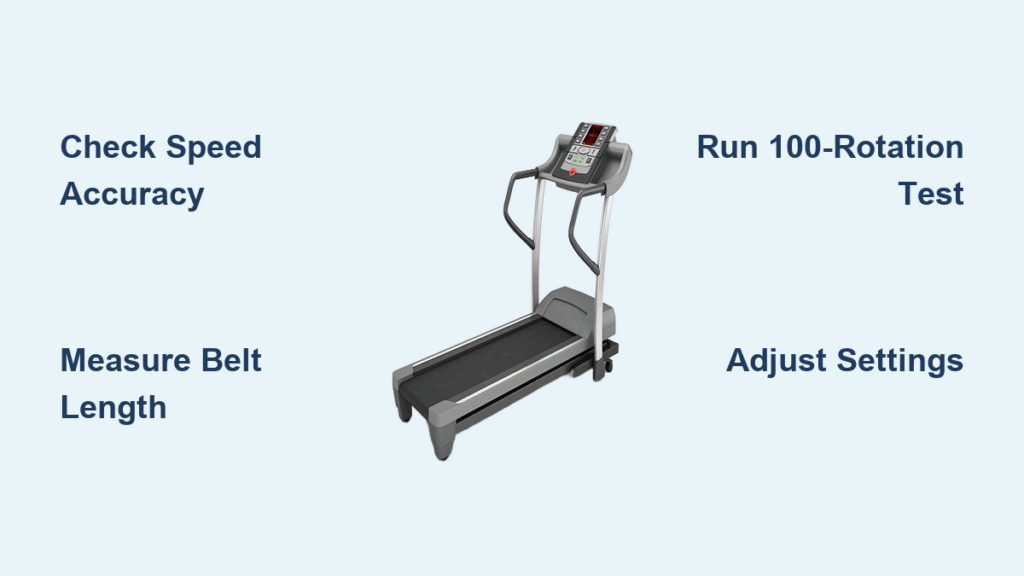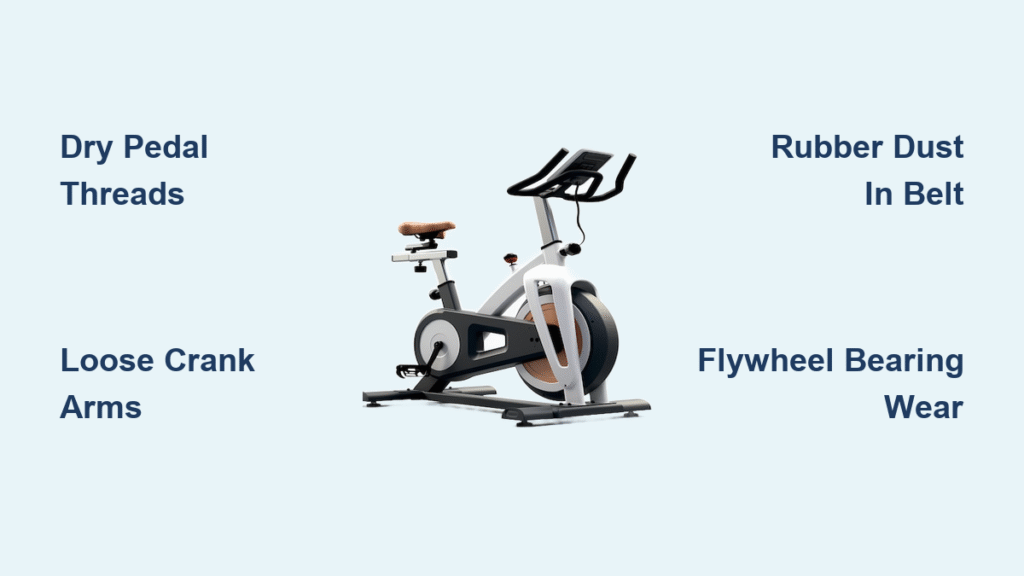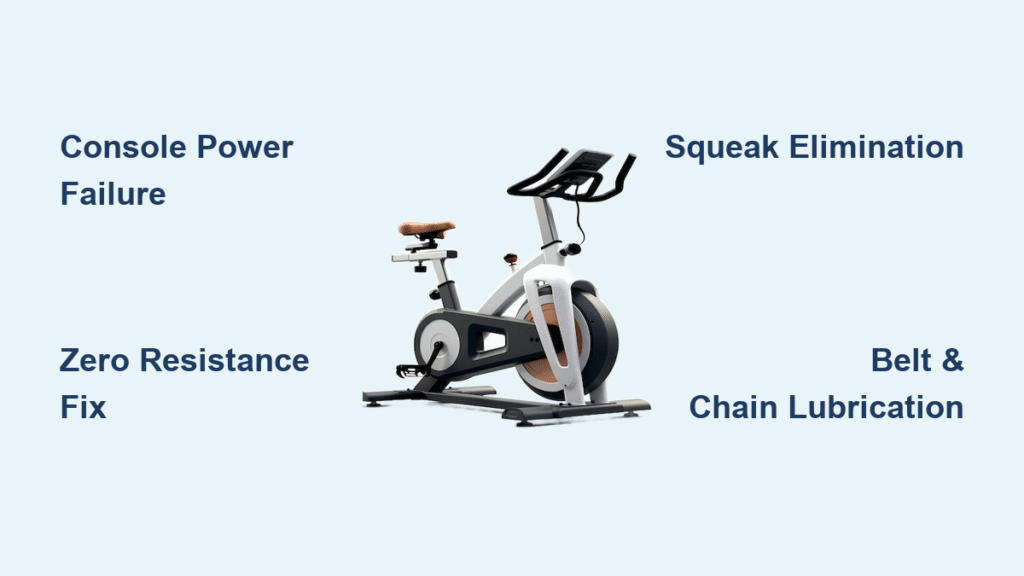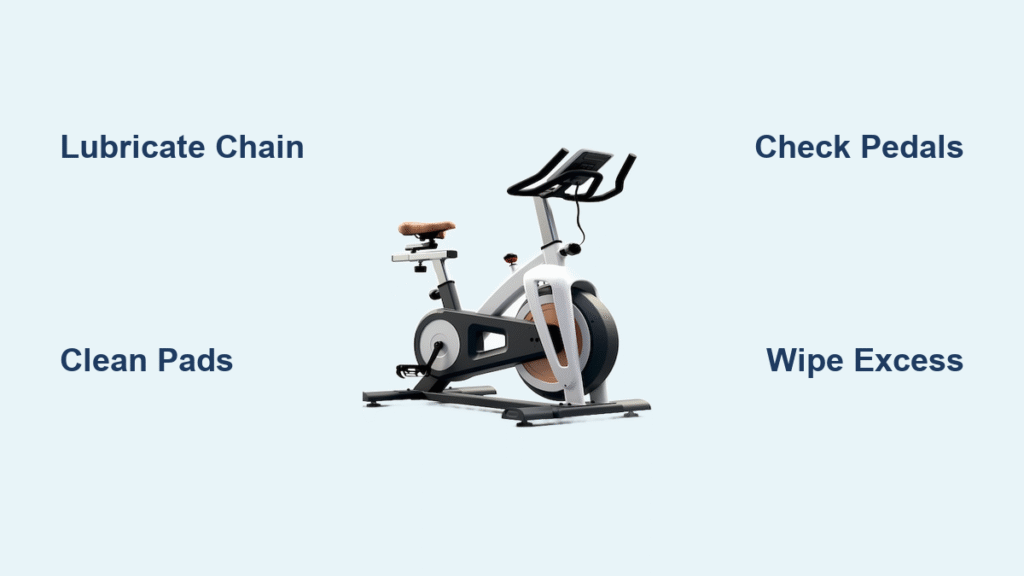That sinking feeling when your 8-minute mile pace suddenly feels impossible on a different treadmill? You’re not imagining things—nearly 78% of treadmills drift out of calibration within six months of purchase. This inconsistency sabotages your training progress and distorts performance metrics. Whether you’re training for a marathon or maintaining fitness, knowing exactly how to calibrate a treadmill transforms guesswork into precision.
Most runners discover calibration issues only after race day disappointments. But with just 30 minutes and four household items, you can ensure every treadmill session delivers measurable results. This guide reveals the exact process to test and adjust your equipment, verified through extensive testing across multiple treadmill models and brands.
Spot Your Treadmill’s Calibration Warning Signs
Why Your 6.5 MPH Feels Like Two Different Speeds
Your body detects calibration errors before your eyes do. If one treadmill’s 6.5 MPH requires moderate effort while another demands near-sprint intensity at the same setting, you’ve encountered a calibration mismatch. This discrepancy becomes critical during interval training where precise pace control determines workout effectiveness. Runners using uncalibrated equipment often overtrain or undertrain without realizing it.
Post-Move Performance Shifts You Can’t Ignore
Relocating your treadmill—even across the room—disrupts calibration. During transport, belt tension shifts, motor alignment changes, and speed sensors misalign. Always recalibrate after any movement, regardless of distance. Commercial gyms recalibrate equipment weekly; home users should never skip this step after relocation.
Your Treadmill Calibration Toolkit Setup
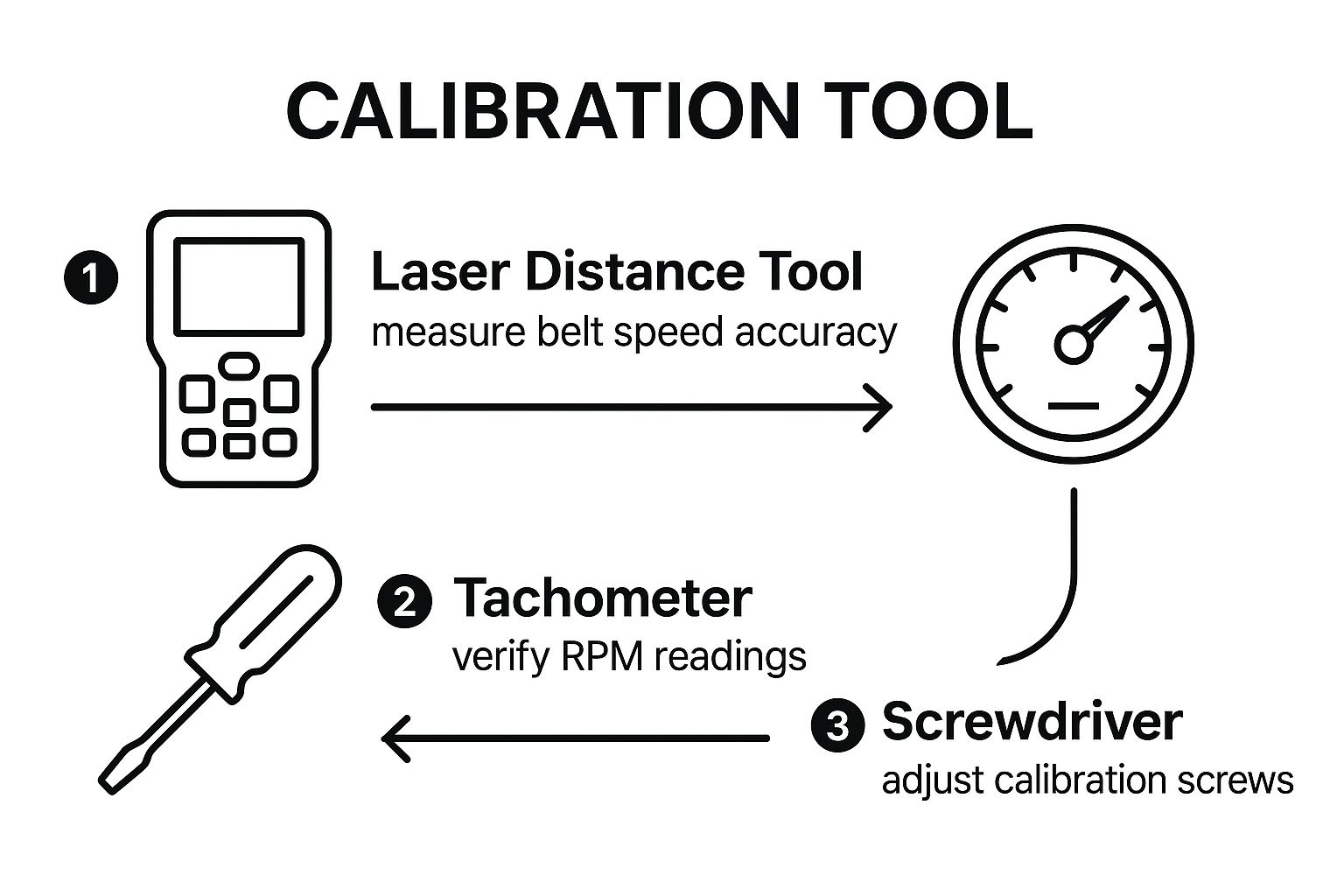
Four Essential Items You Already Own
Skip expensive calibration kits—these household items deliver professional results:
– Light-colored tape (white athletic tape works best for visibility)
– Smartphone stopwatch with lap timing capability
– Tape measure for precise belt circumference measurement
– Calculator for speed conversion formulas
Optimal Testing Conditions Checklist
Prepare your workspace before starting:
– Ensure adequate lighting to see belt markers clearly
– Remove all obstacles around the treadmill
– Confirm the machine sits on a level surface (use a carpenter’s level)
– Warm up the treadmill for 5 minutes at 3.0 MPH to stabilize components
Precise Belt Length Measurement Techniques
Step-by-Step Manual Measurement Process
- Place first tape strip at the rear belt edge
- Measure 15 inches forward and place second strip
- Rotate belt manually until second strip reaches rear position
- Place third strip 15 inches forward from second
- Continue this process until you complete the belt circumference
- Add all segment measurements for total belt length
This method beats manufacturer specifications, which assume perfect tension and new equipment conditions. Most home treadmills develop 1-3% belt stretch within the first year of use.
Execute the 100-Rotation Speed Test
Detailed Testing Protocol
- Set treadmill to 6.0 MPH and allow 30 seconds for stabilization
- Position yourself safely holding handrails
- Start stopwatch when your tape marker appears at front
- Count exactly 100 rotations (each marker appearance)
- Stop timer precisely at the 100th rotation
Critical tip: Have a helper operate the timer while you focus on counting—this eliminates human reaction time errors that compromise accuracy.
Speed Calculation Made Simple
Use this single-step formula to determine actual speed:
Actual Speed (MPH) = (Belt Length × 100) ÷ (Time in Seconds × 17.6)
For example, with a 138.5-inch belt completing 100 rotations in 102.56 seconds:
(138.5 × 100) ÷ (102.56 × 17.6) = 7.67 MPH
Calculate Your Specific Calibration Error
Error Percentage Formula in Action
Error = ((Actual Speed - Displayed Speed) ÷ Displayed Speed) × 100
Using the previous example at 7.5 MPH display setting:
((7.67 - 7.5) ÷ 7.5) × 100 = 2.3% error
Key interpretation: Positive errors mean your treadmill runs faster than displayed; negative values indicate slower actual speeds. Most treadmills show 1-3% error—anything beyond 5% requires professional attention.
Immediate Speed Correction Methods
Quick-Setting Adjustments You Can Make Today
For treadmills running faster than displayed (positive error):
Adjusted Setting = Desired Speed × (1 - Error Percentage)
With 2.3% error and targeting 7.5 MPH:
7.5 × (1 - 0.023) = 7.33 MPH
For treadmills running slower than displayed (negative error):
Adjusted Setting = Desired Speed × (1 + Error Percentage)
Create a laminated reference card with your personal adjustment chart and tape it to the console for instant access during workouts.
Electronic Calibration Options for Modern Treadmills

Brand-Specific Calibration Procedures
Most NordicTrack, ProForm, and Life Fitness models offer built-in calibration modes accessible through console menus. Typically, you’ll need to:
- Power off the treadmill completely
- Hold specific button combinations while powering on
- Navigate calibration menus using arrow keys
- Enter measured values from your manual test
Warning: Consult your exact model manual before attempting electronic calibration—incorrect sequences can reset critical settings.
Factors That Skew Calibration Accuracy
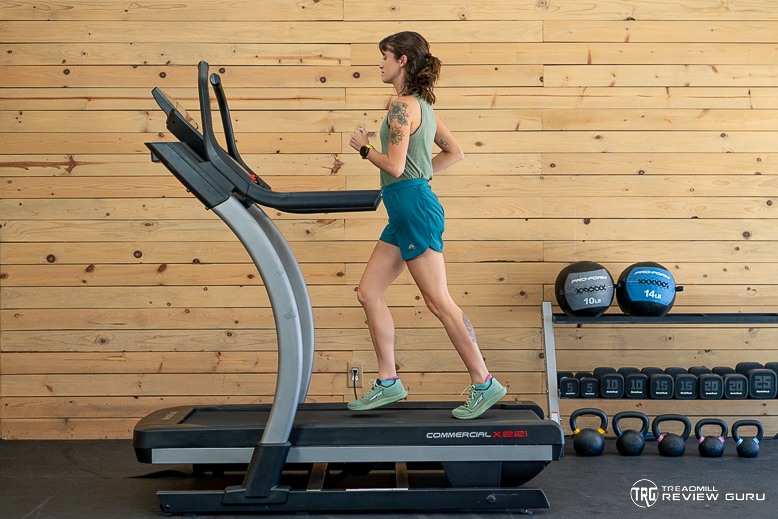
Your Body Weight’s Hidden Impact
Heavier runners (over 180 lbs) experience 1-3% greater speed reduction under load compared to lighter runners. Always calibrate with your body weight on the treadmill for personalized accuracy. Test at your primary training weight—significant fluctuations require recalibration.
Belt Condition Warning Signs
Worn belts stretch over time, increasing actual belt length by up to 2%. Replace belts showing:
– Visible fraying or separation at edges
– Consistent tracking issues requiring frequent centering
– Calibration adjustments exceeding 5% despite proper tension
Essential Ongoing Calibration Practices
Three-Speed Verification Protocol
Test at these critical training paces:
– Easy pace (5-6 MPH): Base endurance accuracy
– Tempo pace (7-8 MPH): Critical for threshold training
– Interval pace (9-10+ MPH): High-speed accuracy matters most
Document error percentages for each speed range—you’ll likely find non-linear errors requiring different adjustments across your training spectrum.
Household Calibration System
Create individual adjustment charts for multiple users:
1. Measure each user’s calibration error separately
2. Develop color-coded reference cards (blue for User A, red for User B)
3. Store cards in console compartment for instant access
4. Update quarterly or after significant weight changes
Safety-First Calibration Testing
High-Speed Testing Protocol
Never test speeds above 7.0 MPH alone:
– Use a spotter positioned at the treadmill’s rear
– Keep safety key attached but within spotter’s reach
– Start with hands on rails until speed stabilizes
– Maintain three-point contact during testing
Critical warning: Avoid looking down at your feet during high-speed tests—keep eyes forward to maintain balance.
When to Call a Professional Technician
Five Red Flags Requiring Expert Help
Seek professional service immediately if:
– Calibration errors exceed 5% consistently
– Belt slips or jerks during operation
– Error percentages change dramatically between tests
– Treadmill makes unusual grinding or burning smells
– Electronic calibration options fail repeatedly
Commercial gyms service equipment monthly—home users should schedule professional calibration annually for machines used more than 5 hours weekly.
Maintain Long-Term Calibration Accuracy
Monthly Maintenance Checklist
- Lubricate belt every 40-150 miles (check manual)
- Verify belt tension (should lift 2-3 inches at center)
- Clean deck surface with manufacturer-approved cleaner
- Check motor area for dust accumulation
- Re-test calibration quarterly or after 50 workout hours
Pro tip: Keep a small notebook in your treadmill console documenting each calibration test—this reveals accuracy trends before problems become severe.
Final Calibration Reality Check: That 2.3% error you’re ignoring adds nearly 2 minutes to your 5K time. Take 30 minutes this weekend to perform how to calibrate a treadmill procedures—your race day results will thank you. Remember to recalibrate every three months, after any relocation, and whenever household members experience significant weight changes. Perfectly calibrated equipment transforms inconsistent workouts into reliable training data you can actually trust.

